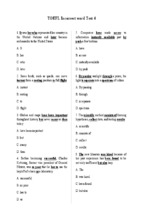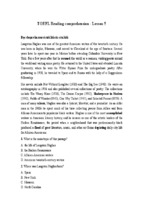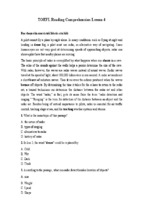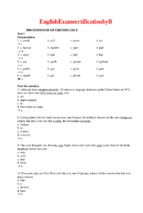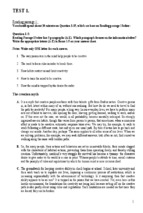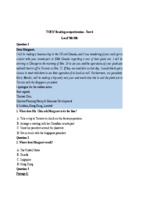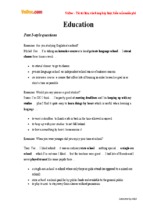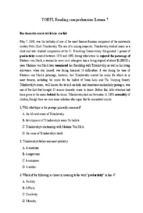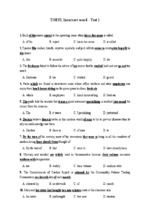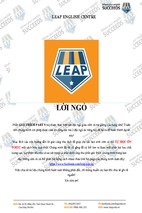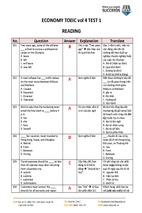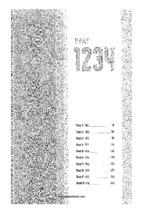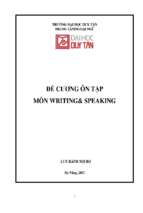HUMAN RESOURCE DEVELOPMENT (HRD) PRACTICES IN
BAC THANG LONG AND NAM THANG LONG INDUSTRIAL
PARKS: BASES FOR A COMPREHENSIVE HRD
PROGRAM FOR INDUSTRIAL PARKS IN VIETNAM
___________________________
A DISSERTATION
Presented to the Faculty of the Graduate School
Southern Luzon State University, Lucban, Quezon, Philippines
in Collaboration with
Thai Nguyen University, Socialist Republic of Vietnam
___________________________
In Partial Fulfillment
of the Requirements for the Degree
Doctor of Business Administration
___________________________
By
PHAM HAI HUNG (JO)
December 2013
i
APPROVAL SHEET
ii
CERTIFICATE OF ORIGINALITY
This is to certify that the research work / dissertation entitled :"Human
Resource Development (HRD) Practices in BacThang Long and Nam Thang
Long Industrial Parks: Bases for Comprehensive HRD Program for Industrial
Parks in Vietnam”, orally defended/ presented under the DBA Program jointly
offered by Southern Luzon State University of the Republic of the Philippines
and Thai Nguyen University of the Socialist Republic of Vietnam, embodies
the result of original and scholarly work carried out by the undersigned.
This dissertation does not contain words or ideas taken from published
sources or written works by other persons which have been accepted as basis
for the award of any degree from other higher education institutions, except
where proper referencing and acknowledgment were made.
Researcher/Candidate
Date Orally Defended:October 7th 2013
iii
ACKNOWLEDGMENT
In grateful recognition and sincerest thanks for the encouragement,
guidance and unselfish sharing of their knowledge, time, effort and skills, and
for the untiring motivation that leads to the completion of this study, the
researcher acknowledges the following:
DR. CECILIA N. GASCON, Ph. D., President of the Southern Luzon
State University in the Republic of the Philippines, for her untiring effort and
belief that this collaboration is possible, thus, enabling us to pursue the DBA
degree;
DR. NGUYEN THANH HAI, Vice Director of the International Training
Center, Thai Nguyen University of the Socialist Republic of Vietnam ,who was
always available to help the researcher to complete his study;
DR. CONRADO L.
ABRAHAM,for his selfless guidance and
assistance in helping her to stay on the right track;
ITC staff, for providing the necessary research materials;
Managers and Employees of BacThang Long and Nam Thang
Long Parks,hisrespondents, for their patience and cooperation in answering
the questionnaire and for other data given;
My friends, for the love and support in one way or the other;
And to all who have contributed to make this study a success.
Pham Hai Hung
iv
DEDICATION
I dedicate this dissertation to my parents, who have always supported me
withtheir continual love, and prayers; to my all relatives,
who have given words of encouragement ;
andto my wife, for her love, moral support,
and understanding.
PHH
v
TABLE OF CONTENTS
PAGE
TITLE PAGE ………………………………………………………………..
i
APPROVAL SHEET ……………………………………………………….
ii
CERTIFICATE OF ORIGINALITY ………………………………………..
iii
ACKNOWLEDGEMENT …………………………………………………..
iv
DEDICATION ………………………………………………………………
v
TABLE OF CONTENTS …………………………………………………..
vi
LIST OF TABLES ………………………………………………………….
vii
LIST OF FIGURES ………………………………………………………...
ix
ABSTRACT …………………………………………………………………
x
CHAPTER
I
2
Objectives of the Study …………………………………….
3
Significance of the Study …………………………………..
4
Scope and Limitations of the Study ………………………
4
Definition of Terms ………………………………………….
5
REVIEW OF LITERATURE ……………………………….
7
Conceptual Framework ………………………………….…
III
1
Background of the Study …………………………………..
II
INTRODUCTION ……………………………………………
18
METHODOLOGY
Locale of the Study …………………………………………
Research Design ……………………………………………
20
Data Collection Method …………………………………….
20
Population, Sample and Sampling Technique …………..
21
Research Instrument ……………………………………….
21
Data Gathering Procedure …………………………………
22
Statistical Treatment ………………………........…….……
IV
20
23
RESULTS AND DISCUSSIONS ………………………….
24
vi
V
SUMMARY OF FINDINGS, CONCLUSIONS AND
RECOMMENDATIONS
Summaryof Findings ………………………………………
52
Conclusions …………………………………………………
54
Recommendations …………………………………………
55
REFERENCES ………………………...…………………………………..
57
APPENDICES ……………………………………………………………...
59
Questionnaire ………………………………………………………..
60
CURRICULUM VITAE …………………………………………………….
66
vii
LIST OF TABLES
TABLE
PAGE
4.1
Trainees of Training Program ………………………………...
33
4.2
Training Needs …………………………………………………
36
4.3
Training Methods ………………………………………………
38
4.4
Training Time …………………………………………………..
39
4.5
Training Content for Managers ……………………………….
42
4.6
Training Budget ………………………………………………..
44
4.7
Criteria of Training Evaluation………………………………..
46
4.8
Sample of Job Description ……………………………………
48
4.9
Sample of Evaluation Test ……………………………………
50
4.10
Summary of Comprehensive Training Program for
Industrial Parks in Vietnam …………………………………...
51
viii
LIST OF FIGURES
FIGURE
PAGE
2.1
The Needs Assessment Process ……………………………...
10
2.2
Training Practices in BacThang Long and Nam Thang Long
Industrial Parks: Bases for a Comprehensive Training
Program for Industrial Parks in Vietnam………………………
19
4.1
Gender Structure of Management Group …………………….
24
4.2
Age Range of Management Group ……………………………
25
4.3
Education Levels of Management Group ……………………..
25
4.4
Gender Structures of Employees ……………………………...
26
4.5
Age Structure of Employees ……………………………………
27
4.6
Education Levels of Employees ……………………………….
27
4.7
Purpose of Training Program in Vietnamese Companies …..
29
4.8
Purpose of Training Program in Foreign Companies ………..
29
4.9
Trainees of Training program in Vietnamese Companies …..
31
4.10
Trainees of Training Program in Foreign Companies ……….
31
4.11
Training Needs Assessment in Vietnamese Companies ……
34
4.12
Training Needs Assessment in Foreign Companies ………...
34
4.13
Training Methods in Foreign Companies ……………………..
37
4.14
Training Methods in Vietnamese Companies ………………..
37
4.15
Training Content for Employees in Foreign Companies …….
40
4.16
Training Content for Employees in Vietnam Companies ……
40
4.17
Effectiveness of Training in Vietnam Companies ……………
45
4.18
Effectiveness of Training in Foreign Companies …………….
45
ix
ABSTRACT
Title of Research
: HUMAN RESOURCE DEVELOPMENT (HRD)
PRACTICES IN BAC THANG LONG AND
NAM THANG LONG INDUSTRIAL PARKS:
BASES FOR A COMPREHENSIVE HRD
PROGRAM FOR INDUSTRIAL PARKS IN
VIETNAM
Researcher
: PHAM HAI HUNG (JO)
Degree Conferred
: DOCTOR OF BUSINESS ADMINISTRATION
Name and Address
of Institution
: Southern Luzon State University Lucban, Quezon,
Philippines and Thai Nguyen University, Socialist
Republic of Vietnam
Adviser
: Dr. Conrado L. Abraham
Year Written
: 2013
______________________________________________________________
Training as a theory is an activity for the expansion of human capital
within an organization through the development of both the organization and
the individual to achieve performance improvement.
BacThang Long and Nam Thang Long industrial parksaretwolarge
industrialZonesin
Hanoiwherehundred
ofcompaniesare
operating.The
companies have achievedgreat successes in their business so far.
However,the companies are alsofacingchallengesrelated tohuman resources.
For that reason the study:"Human Resource Development (HRD) Practices
in BacThang Long and Nam Thang Long Industrial Parks: Bases for a
Comprehensive HRD Program for Industrial Parks in Vietnam” was
conducted.
The study aimed to identify aspects of the real situation of training
practices in BacThang Long and Nam Thang Long industrial Parks. The study
x
attempted to answer the following: (1)What is the profile of the respondents at
both industrial Parks in terms of: Age, Gender, Educational level, Position; (2)
What are the human resource development practices of the foreign
companies and Vietnam companies in terms of Training;(3) Which of the
training practices were perceived to be acceptable and common among the
respondents; (4) What
kind of comprehensive training program can be
developed as bases for implementing training practices in industrial parks.
The
researcher
came
up
with
the
following
conclusions:The
respondents belong to the young generation, which are mostly male and have
a high level of education. Some also holds managerial positions based on
their academic qualification. ; When it comes to trainees, there is a big
difference between Vietnamese and foreign companies. In choosing trainees
for training, foreign companies pay much attention to employees who produce
products directly and decide on quality of products and productivity.
Conversely, Vietnamese companies pay much less attention to workers but
pay more attention to managers; Intraining methods, on – the job training and
coaching are the training methods that both Vietnamese and foreign
companies most frequently . Training programs include on the job training,
coaching and self –study. The researcher recommended the following: The
human resource department in each company, where all areas of human
resource management including training can be implemented may build
aprogram based on recruitment and selection, job design, compensation and
performance appraisal; Training budget must be regulated and allocated in by
cooperating with other departments; The organization, especially the HR
department must identify the employees to be trained for competence on their
xi
present job, as contrasted with those who are being educated and developed
for advancement; Most companies in industrial parks applied job-related
training methods, which are inexpensive; Training content for managers is
one of the most widely offered and important forms of training; and Evaluation
of training and development is needed.
xii
1
Chapter I
INTRODUCTION
To developan economy that requirescapital, science and technology,
natural resources andmanpower and togrow rapidly and sustainably, it should
be
basedon
threebasic
elements:
applynew
technologies,
developmoderninfrastructureandimprove the quality ofhuman resources.
The
socio-economicdevelopmentdepends
conditions,butmostremainlargelydependent
onmany
factors,
onhuman
and
factors.
Comparedwithotherresources, the human resource is more dominant.
Therefore, more than any otherresources, human resource always occupies
playthe
leadingroleinthe
especially
socio-economicdevelopment
in
of
the
promotingthe
country,
periodof
industrialization,modernizationandinternational economicintegration.
The
exploitationand
utilizationof
human
resourceeffectivelyisan
extremely importantissue, human resourceshould promote the diversity
andabundance ofEasterncultural traditionssuch ashospitality, talent,intellect,
and
science.
However,important
potentials
have
not
beenexploitedfully,properly andmayhave notbeen used effectively.
Today,when the worldenters theintellectualeconomy, the problem of
talentisa critical issue. Talented peopleare even more importantthan
ever.Tobecome aleader in thedevelopment, it must advanced human
resource,Therefore,
countries
shouldactivelyplan,
create
sources,
trainandretrainhuman resourcestodevelop mosteffectively
Vietnam is in the modernization and industrialization process. Thus,
many industrial zones and export processing zones have been established
2
and attracted millions of employees working inside that promote the country’s
economic growth. However, the industrial zones are facing some difficulties
because enterprises still do not have a qualified comprehensive training
program, so the quality of human resource is low. Therefore, ifthey would
betrainedtheseresourceswill create a strong impacton growth andeconomic
developmentof the country.
In a strong competitive environment, many companies have paid
attention to training and human resource development because it is the basis
for existence and development. Training can provide skilled staff for the
company to accomplish tasks given and also increase productivity. Moreover,
along with advancement in technique, technology requires company to train a
team of highly-skilled and creative staff to handle complex problems. Also, in
market economy, companies compete by using knowledgeable, highly skilled
and creative human resource in their production. That makes human resource
development in companies increased rapidly as of today.
Background of Study
BacThang Long and Nam Thang Long Industrial Parks are located in
Hanoi City. They have gained a lot of successes but also cope with the
challenge of human resource.
Before conducting the research, the researcher had in-depth interviews
with some managers and workers on the training practices in their companies
in Bac Thang Long and Nam Thang Long Industrial Parks. The researcher
realized that companies had paid attention to TRAINING but companies are
3
facing some problems of human resource such as: lack of highly technical
and skilled employees, and unstable workforce.Therefore, an effective training
program is a necessary need as observed.
From
the
above
reasons,
the
researcher
chose
the
topic
"TrainingPractices in Bac Thang Long and Nam Thang Long Industrial
Parks: Bases for a Comprehensive TrainingProgram for Industrial Parks
in Vietnam”.
Objectives of the Study
The research expected to provide better understandings of human
resource development activities, and different problems concerning the
current situation oftraining in Bac Thang Long and Nam Thang Long industrial
Parks where nearly 100 companies are operating.
Specifically, it sought to answer the following questions:
1. What is the profile of respondents in different companies in terms of:
1.1. Age;
1.2. Gender;
1.3. Educational level;
1.4. Position.
2. What are the training practices of the foreign companies and Vietnam
companies in terms oftraining?
3. Which of the training practices were perceived to be acceptable and
common among group of respondents?
4
4. What
training
program
can
be
developed
as
bases
of
implementingtraining practices in an industrial park?
Significance of the Study
The outcome of the study will be significant to the following:
Managers of the Companies operating in Bac Thang Long and
Nam Thang Long industrial Parks.The research is very significant to their
managers
because
it
provides
important
information
to
manage
effectively.Also, through analysis of the real situation of human resource
development, a comprehensive training program can be developed for
industrial parks in Vietnam.
Researcher.This study will help the researcher to understand the
current situation of human resource development in the industrial zones in
general and in Bac Thang Long and Nam Thang Long industrial Parks in
particular. In addition to this, it will help the researcher to improve his skill in
doing scientific study. This is also an opportunity to apply DBA knowledge into
practice.
Future Researchers. This is also a significant reference resource for
future researchers.
Scope and Limitations of the Study
The research was carried out in Bac Thang Long andNam Thang Long
industrial Parks focusing on current situation of training practices of
companies. Survey was limited to companies in Bac Thang Long and Nam
Thang Long Industrial Park in Hanoi with 377 respondents (managers,
workers, and engineers).
5
Definition of Terms
For a clear understanding of the terms used in the study, the following
are operationally and conceptually defined:
Evaluation of Trainingis the process of obtaining information or data on the
effectiveness of training program conducted and assessing the value of
training in the light of that information. Evaluation involves controlling
and correcting the training program.
Human Resources is a term used to describe individuals who make up the
workforce of an organization as a result of theteaching of vocational or
practical skills and knowledge related to specific useful competencies.
Training has specific goals of improving one’s capability, capacity,
productivity and performance.
Human Resource Development is also called “training and development”. It
is a part of HRM that specifically deals with training and development
of employees. Human resource development includes training an
individual after he/she is hired, providing opportunities to learn new
skills, knowledge, and abilities.
Trainingis the acquisition of knowledge, skills and competencies.
Training Needs Assessmentis an ongoing process of gathering data to
determine what training needs exist so training can be developed to
help the organization accomplish its objectives. Conducting needs
assessment is fundamental to the success of a training program
Training Practicesrefer to organizational activities practiced at training
ensuring the fulfillment of organizational goals.
6
Training Program is a series of activities to determine training purpose,
trainees, training content, training time, training method, training budget
and training evaluation.
7
Chapter II
REVIEWOFLITERATURE
This chapter provides sufficient theory of Human resource practice that
has significant effect on the conduct of the study. Finally a conceptual
framework established to aid the conduct of this research work.
Training
Training plays an important role in developing the skills of workers in
organizations
in
order
to
improve
productivity
and
international
competitiveness. It focuses on the improvement of the knowledge, skills and
abilities of employees in the organization (Nadler and Nadler).
Further, training is the systematic process of altering the behavior of
employees in a direction that will achieve organizational goals, or in this study
of Yara, Naddler definedtraining as an activity concerned with a person’s
futurejob. Thus, it is an activity which enable employee to acquire new
knowledge, new skills to perform effectively.
However, they are different from their focus, scope, time frame and
purpose (Nguyen Van Diem, Nguyen Ngoc Quan, 2004). Training typically
focuses on providing employees with specific skills or helping them to correct
deficiencies in their performance. Development is concerned with the future of
the organization and the individual in directions, which are not as clearly
definable. Training is expense; education and development are an
investment.
8
Nowadays, training is moving from a primary focus on teaching
employees specific skills to a broader focus on creating and sharing
knowledge.
Traditionally, training was viewed as a means to teach employees
specific skills and behaviors. This role of training will continue into the future.
This view of training suggests that business conditions are predictable, they
can be controlled by the company, and the company can control and predict
the knowledge and skills that employees will need in the future.
For the time being, as the competitive challenges indicate that
unpredictability in the external environment in which companies operate is
likely to continue. This means that because problems can not be predicted in
advance, training needs to be delivered on an as-needed basis to help
employees dealt with specific business problems as they occur.
Many companies believe that to gain a competitive advantage, the key
is to develop intellectual capital. Intellectual capital includes cognitive
knowledge (know what), advanced skills (know how), system understanding
and creativity (know why) and self-motivated creativity (care why).
Traditionally, training departments have focused their resources on cognitive
and advanced skills. But the real value of training may be in having
employees understand the manufacturing or service process and the
interrelationships between department and divisions as well as motivating
them to be innovative and deliver high quality and services.
Training process consists of three stages: needs assessment, conduct
training and trainingevaluation.
- Xem thêm -


